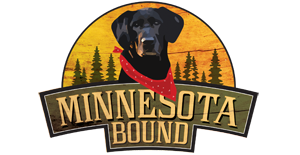Good evening Fellow Cam’sBackWatchers!!
Well, it was a bit of a wait but the cam server is in it’s new home and the cam is back better than ever. BBC has been working diligently to get us the best picture we can have. Thanks BBC! They also did some work that is getting us closer to having the IR light at night. Part of the problem with the delay in starting up the IR is the amount of sunlight that the nest gets this time of year. BBC has to make sure the batteries get enough charge every day to help them last through the night. That and some software issues are all that is standing between us and night sight at this time. Oh, and maybe a wire or 2. So please, be patient, I am sure we will have it in time for the hatches!
When the cam did come up mid afternoon Mom and Dad were doing what they were doing the last time we saw them. Moving sticks, yelling at the neighbors, trading places on the eggs and having a good time living the life of apex predators. It was nice and warm today with a clear blue sky that helped get the snowmelt under way for real. Unfortunately that means that the river may flood sooner than expected. But the good side of that is the future meals for the eaglets will have more space to swim around. Lots of ducks and geese have been heard on the cam looking for a place to land.
The question of the day on the SS was:
What is that brood patch, anyway?
We all have heard and most of us have used the term “brood patch” as we enjoy and learn from watching our favorite eagle pair during their nesting season. The brood patch is an area on the breast area of the bald eagle that develops shortly before the female lays the eggs. The hormonal changes cause the feathering in this area to fall out leaving a patch of bare skin. In the brood patch area there is greater water flow and some swelling to allow the blood flow to warm the larger area. The increased flow of blood in the area creates warmth for incubation. Both the male and the female bald eagle develop a brood patch, but typically the female’s is the larger as she assumes more of the incubation duties. The brood patch helps insure the eggs incubation temperature is maintained at 99.5 degrees Fahrenheit!
In most birds the brood patch develops in the same manner as with the bald eagle. However, geese and ducks pluck their feathering in the brood patch area and use the feathers to line the nest! In most song birds, the female is the only one of the pair that develops the brood patch. As we continue to watch thru the incubation period we will notice the incubating bird wiggle back and forth as they rest atop the eggs. This allows them to “feel” the eggs in order to position the brood patch so the warmth surrounds during incubation. We hope this increases your understanding of the brood patch and how it incubates the nest eggs!!
Many thanks to jreagle for the great info on brood patches!
On to the vids and pics of the day!
MN Bound Eagles 3 13 14 Cam's Back! Highlights
MNBound Eagles ~ What Do I Do With This Thing?
MNBound Eagles ~ Feather Inspection
So, are we getting another egg tomorrow or not, Grandpa???
Big thanks to dragonlainey and birdbrain56 for the vids today! And an extra big wing clap to BBC for getting us back online!!
Time to tuck my head under my wing and say Sweet Eagle Dreams to everyone! We’ll see you on the nest tomorrow!
TalonStrike
PS: Please click the Like Button over dere!➷ It gives MN Bound warm fuzzies when you do! Thanks!
If you have any questions or comments, please feel free to post them below and please if you do comment put the chat name you use in the comment so we can know who you are. Thanks! Also, we'll be updating our official MN Bound LIVE Eagles Facebook Page regularly so you can follow along, like, or share with your friends. We have several site moderators this year to help give optimal information to all that want to learn more about these magnificent birds.




